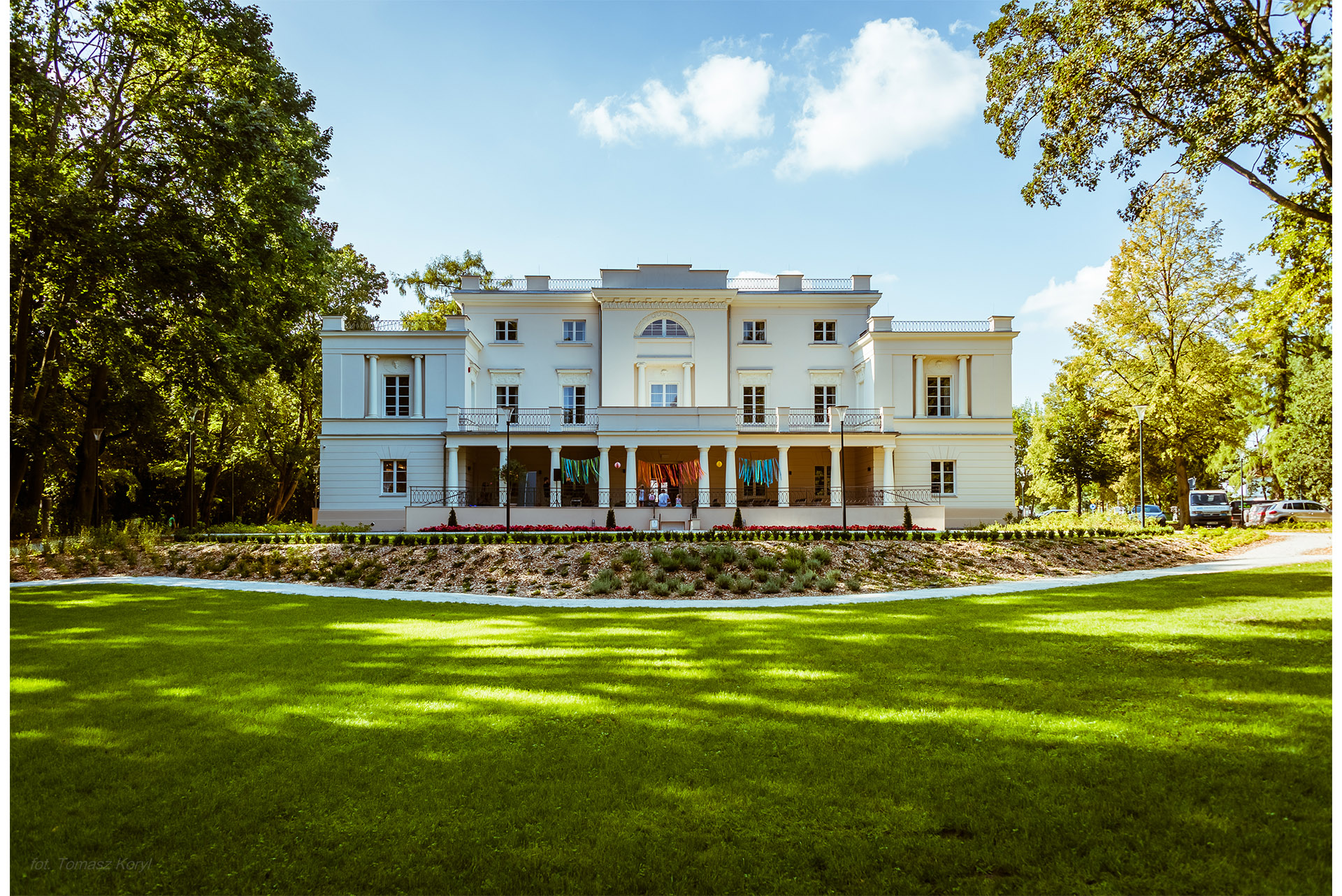The palace is located in the north-eastern part of the park, facing north. The building in the style of romantic classicism is the oldest palace of this type in Wielkopolska.
Already at the beginning of the 15th century, Jankowice was a rural settlement based on German law, which is confirmed by the information from 1402 regarding the dispute between the heirs of Ceradz, Żegota and Marcin with Jan Granowski. The palace in Jankowice was built at the turn of the 18th and 19th centuries, and its reconstruction took place in 1803 at the behest of Wawrzyniec Engestrӧm (Swedish envoy to King Stanisław August Poniatowski), who settled in Greater Poland after marrying Rozalia Chłapowska. The palace was built in the style of romantic classicism. The building was initially built on a square plan with avant-corps in both façades, covered with a flat roof topped with a balustrade. The garden façade has a terrace, supported by columns, overlooking the park. In the upper part of the avant-corps, there is a window in a rectangular recess, framed by Ionic columns, and a semicircular window above the window.
In 1899, a palace chapel was founded in Jankowice. In the same year (16 April) she also received an indult from Pope Leo XIII, for which the owners of the palace, Jadwiga and Stefan Kwilecki, sought. According to the privilege, masses could be celebrated in the chapel. throughout the year, except for Resurrection Sunday, with the obligation to participate in the Holy Mass. only those listed in the document fulfilled the Sunday obligation. In 1928 Jadwiga Dziewulska née Zamoyski asked for an extension of the indult, but she did not receive such consent until her death (1935). In this situation, Mr. Dziewulski repeated his request and he probably received it, because the chapel functioned until 1938[3].
In 1912, on the order of Stefan Kwilecki, the palace was rebuilt by Roger Sławski, then side, two-story wings were added, crowned with terraces. From the front and from the side of the park, 10-column porches were added.
In 1935, with the administrative reform, the former manor area was incorporated as a community into the Tarnowo Podgórne commune. At that time, the owner of Jankowice was Konstanty Dziewulski, the chairman of the Christian-National Agricultural Party[4], there was a gymnastic society “Sokół” in the village, including its female team.
9 September 1939 was the first day of occupation of Jankowice by the Grenzschutz reconnaissance unit, Konstanty Dziewulski and Henryk Kwilecki were executed[5]. During the occupation, the palace was occupied by German families who came from Berlin.
After the end of hostilities and the takeover of power by the communists, the property in Jankowice was parceled out under the agricultural reform. A production cooperative was established on the grounds of the manor farm. In 1946, the palace housed the Center for the Improvement of Personnel Mechanization of Agriculture, later the Training Center of the Voivodship Office, and from 1978 the Center for Creative Work of the Polish Students Association. In the early 1990s, the entire facility was communalized for the benefit of the Tarnowo Podgórne commune.
The palace was lucky to have foreign patrons. In 1992, the “Tilburg-Poland” Foundation began its activity here. After years of struggle in courtrooms, the Tarnowo Podgórne commune becomes the rightful owner of the palace and park complex located in Jankowice. However, the building was very degraded, there was less equipment in the palace rooms, and the park was neglected.
As curiosities of the palace, it is said that at the end of 1831, Adam Mickiewicz visited here passing through, and in the interwar period, a young officer, later general and president of France Charles de Gaulle, was hosted in the palace.
Park in Jankowice
In the south-western part of the park, a chestnut avenue runs through the park; the wooded part of the park diverges from it. To the south of it, the dense woodland is dominated by common spruces. A noteworthy spot is between the pond and the road to Edmundów, where several spruce trees grow on a hill, offering extensive views of the surrounding lawns and woodland. In this part, at the edge of the pond, the attention is drawn to an old, spreading brittle willow with a trunk circumference of 440 cm. It is a delight to behold and is the pearl of the park. Nearby is a group of sycamore trees. At the northern end of the pond, in the central part, there is a magnificent pedunculate oak with a circumference of 320 cm and a monumental plane tree with a circumference of 445 cm. There are 4 islands on the pond in the park.
Based on:
T. Czajek’s article “Sąsiadka czytaj”, August 2004
Wikipedia

